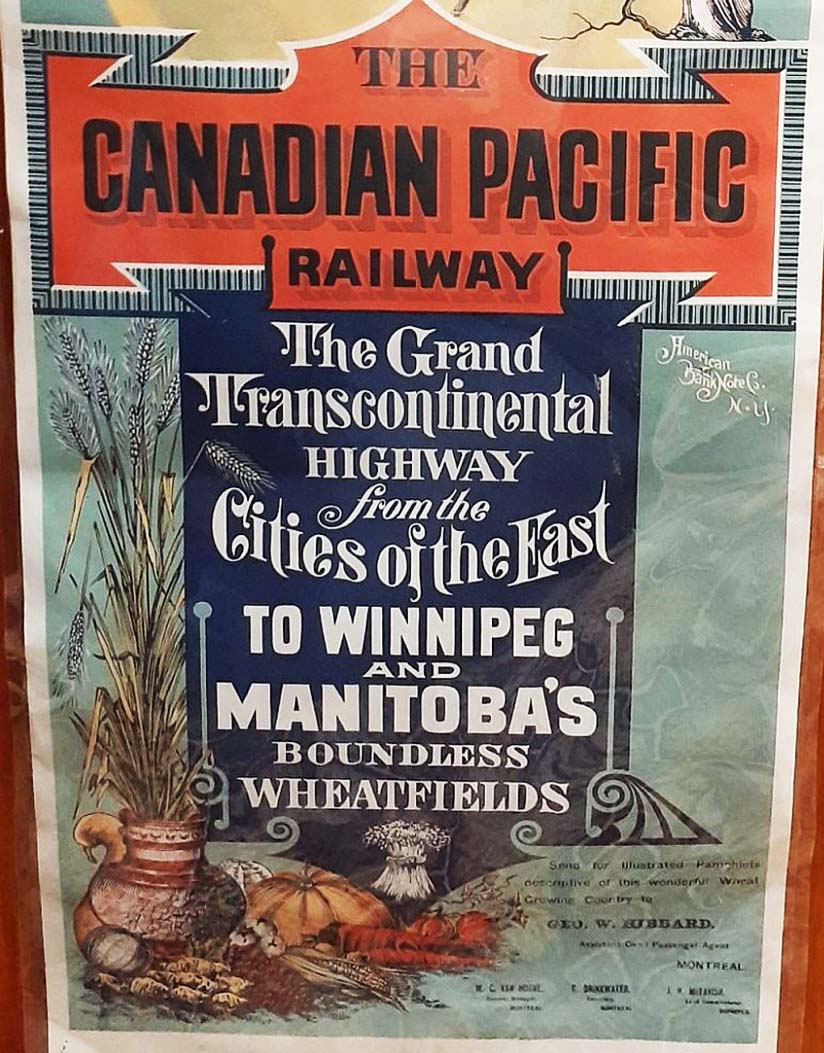
Virden Manitoba - As many of you may know, Virden was originally a railway construction tent town for the Canadian Pacific Railway (CP) in
1882.
Canada's earliest railway companies, like CP, started during the early days of Confederation.
Ontario, Quebec, Nova Scotia, and New Brunswick had established the new country of Canada on 1 Jul 1867.
A few years later, Manitoba (1870), and British Columbia (1871), would join Canada.
The eastern provinces and B.C. joined due to the promise of a transcontinental railway.
Many entrepreneurs saw this as a business opportunity to make their fortune, such as the Scottish Canadian businessmen who formed and incorporated the CP on
16 Feb 1881.
When construction first began, traversing the rocky Canadian Shield of Ontario proved to be a struggle for the railway and delayed construction.
What got it ahead of schedule was the flat Prairie provinces that made it easier to lay track.
In Craigellachie, B.C. the railway was completed 7 Nov 1885 connecting Canada.
The first passengers were from Montreal heading to Port Moody on 28 Jun 1886.
Once the CP helped connect Canada, they focused on bringing new immigrants to the Western Provinces to become part of the Prairie province's
agriculture.
During construction of the railway, CP bought land from the government for their workers, train stations, and tracks.
 It seems unlikely CP actually bought any land from the government as part of the payment for construction
consisted of land grants from the federal government.
It seems unlikely CP actually bought any land from the government as part of the payment for construction
consisted of land grants from the federal government.
With the line completed, CP sold their extra land back to the government to help create townsites or directly to potential farmers.
They even had an "Exhibition Car" filled with wheat and produce travelling to the eastern provinces to encourage people to come to the
West.
They advertised to European newspapers inviting immigration to Canada.
CP had special fees for seasonal workers, dubbed "Harvest Cars."
By the 1920s, they had brought approximately 45,000 workers to the West.
To add icing to the cake, CP even pre-made farms to encourage people to come here.
These farms were around 65 to 130 hectares (160 to 320 acres), had a barn and house, a third of the fields were sown, or ready to be seeded, and came equipped
with a well and pump.
Between 1909 and 1919, there were more than 700 farms for the new farmers.
Other farms related to the CP were the experimental farms.
These farms produced new wheat varieties that could withstand the climate of the Northwest, developed and taught irrigation methods, and tested soil in some
areas.
CP, and the railway in general, may have disappeared in some towns, but the history lives on through the legacy they left behind.
Megan Holowick .
(there was no image with original article)
(usually because it's been seen before)
provisions in Section 29 of the Canadian
Copyright Modernization Act.
